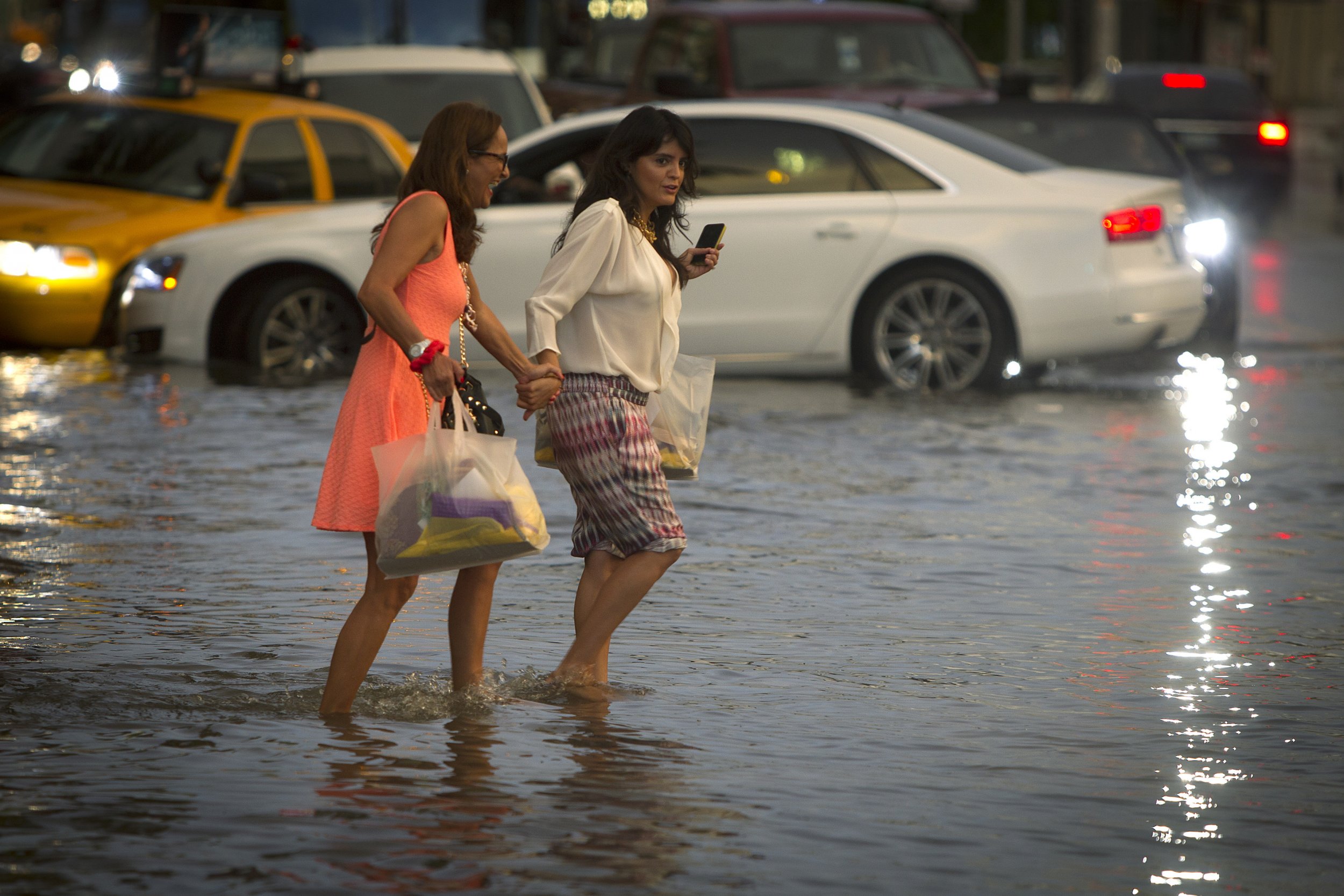
As more and more photos of submerged cars and streets transformed to canals show up everywhere from British cities to beachfront communities in South Florida, the seriousness of sea-level rise is starting to be felt. It's going to get much worse, even if we manage to curb emissions enough to stave off the worst of global warming, which isn't going very well. Naturally, people are trying to think of large-scale solutions. Some of these are just not going to work.
In a paper published March 9 in Earth System Dynamics, a group of researchers tried to think through what would happen if we tried to pump massive amounts of water back onto the Antarctic ice sheet, to stave off the minimum projected sea level rise by mid-century. The idea was that, once in Antarctica, the water would freeze back into ice, and hypothetically stay put, locked up as a solid.
"We wanted to check whether sacrificing the uninhabited Antarctic region might theoretically enable us to save populated shores around the world," Katja Frieler, a scientist at the Potsdam Institute for Climate Impact Research and lead author on the study, said in a statement.
Unfortunately, that won't work. The weight of the added ice over the surface of the sheet would push ice outward, accelerating the process of ice loss from the coasts that occurs naturally, usually over a longer period of time. The researchers found that we could conceivably store the water for a decent amount of time if the water was dumped far enough inland; to keep it frozen for a millennium would require pumping and dumping it 435 miles from the shore. From an engineering perspective, that would be very hard.
It would take more than 7 percent of the energy supply of the whole world just to power the pumps that would be needed to get the water from sea level to the top of the Antarctic ice sheet, which is 13,000 feet high, and then cart it 435 miles to the interior of the continent. Antarctica is very windy, so one option would be to generate that electricity with wind power. All we'd need to do is build 850,000 wind-energy plants on the ice continent, according to the researchers' calculations.
Let's say we, as a planet, collectively figure out how to engineer and finance such a project. It would still only be a temporary fix, subject to massively disastrous accidental failure: "When we stop the pumping one day, additional discharge from Antarctica will increase the rate of sea-level rise even beyond the warming-induced rate," Anders Levermann, a scientist at Columbia University's Lamont Doherty Earth Observatory and an author on the study, said in a statement.
"The magnitude of sea-level rise is so enormous, it turns out it is unlikely that any engineering approach imaginable can mitigate it," he said. So if we don't want to start abandoning our coastal cities, Levermann said, we'd better get on this whole emissions-cutting thing fast.
Uncommon Knowledge
Newsweek is committed to challenging conventional wisdom and finding connections in the search for common ground.
Newsweek is committed to challenging conventional wisdom and finding connections in the search for common ground.
About the writer
Zoë is a senior writer at Newsweek. She covers science, the environment, and human health. She has written for a ... Read more
To read how Newsweek uses AI as a newsroom tool, Click here.








